![]()
![]()
![]()
Use LEFT and RIGHT arrow keys to navigate between flashcards;
Use UP and DOWN arrow keys to flip the card;
H to show hint;
A reads text to speech;
9 Cards in this Set
- Front
- Back
|
Sister chromatids
|
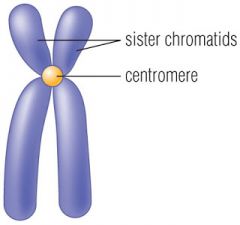
two halves of the replicated chromosome. (After DNA replication.)
|
|
|
chromosome
|
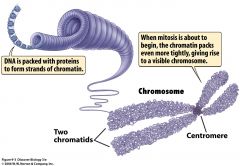
DNA wound tightly and organized; This is the form of DNA during mitosis and meiosis.
|
|
|
centromere
|
the central portion of the chromosome that connects the sister chromatids
|
|
|
homologous chromosomes
|
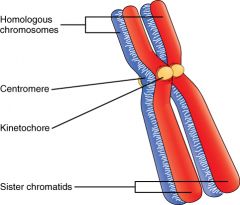
two chromosomes coding for the same type of info (ex: eye color); one from each parent. Together they form a tetrad (blue and red in picture)
|
|
|
diploid
|
normal number of chromosomes; stands for 2 of each kind; represented by 2n. 2n=46 in humans.
|
|
|
haploid
|
only one set of each kind of chromosome (half of the pair); represented by n. n=23 in humans
|
|
|
germ cells
|
cells in testes or ovaries that produce sperm or egg through meiosis.
|
|
|
crossing over
|
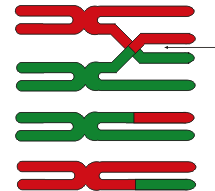
Gene exchange on chromosomes that can occur during the first stage of meiosis.
|
|
|
centriole
|
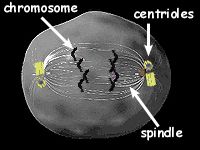
cell organelle that attaches to chromosomes using spindle fibers; used in both mitosis and meiosis.
|

